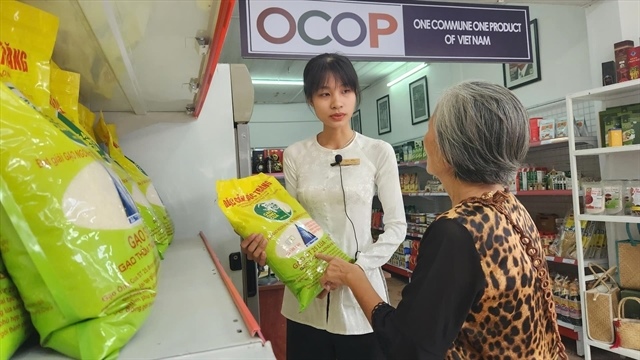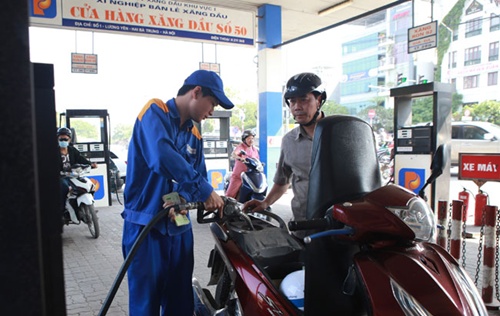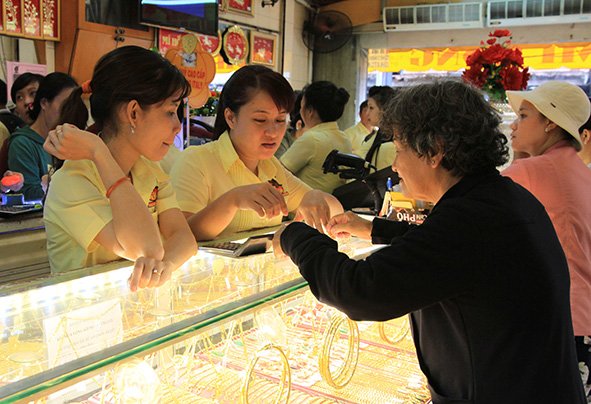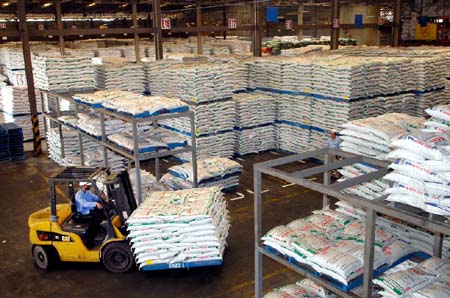Vietnam's edible oil market holds much promise
Vietnam's edible oil market holds much promise
Ms. Ho Ngoc Chi, a 36-year-old housewife in Lang Street in Hanoi, told VET she’s always chosen cooking oil brands advertised on TV because she believes they are of good quality.
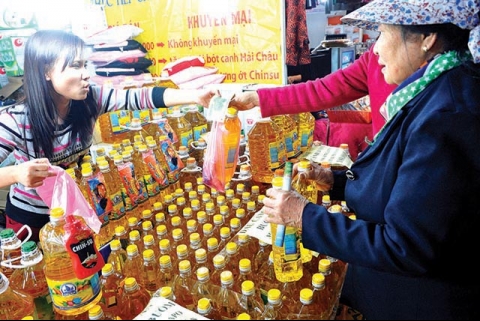
Recently, however, on trips to the supermarket, she’s noticed a lot of other cooking oil brands at cheaper prices.
“I’m a bit confused now about which one to buy,” she said. “Apart from brands that I’m familiar with, such as Cai Lan, Tuong An, and Neptune, there are also many other types available. I don’t know what their quality is like but I would like to try them so I know what is most suitable for my family.”
Ms. Chi isn’t the only one to have noticed that Vietnam’s edible oil market has seen increasingly fierce competition between domestic oil brands and between domestic and foreign brands.
Nearly 40 companies with hundreds of edible oil brands can now be found around the country. The Vietnam Vegetable Oils Industry Corporation (Vocarimex) is the largest producer in Vietnam, owning many familiar brands such as Simply, Neptune, Mezan, Cai Lan, Marvela and Tuong An.
However, with a market of some VND30 trillion ($1.41 billion), the edible oil industry has attracted a flood of new players, even a real estate company.
Severe competition
Vocarimex and the Musim Mas and Company Oils & Fats Pte Vietnam Company Ltd under Singapore’s the Musim Mas Group, one of the leading oil producers in the world, has begun construction of an oil production facility at the Nghi Son Economic Zone in north-central Thanh Hoa province.
The project has total investment of more than $71.5 million and will be the largest such facility in the country. After Phase I is completed at the end of 2016 capacity will stand at 600 tons in a range of types, including soy oil, canola oil, palm oil, and fish oil, for the domestic and international markets.
Previously, the KIDO Group (KDC), formerly known as the Kinh Do Corporation, signed a cooperative arrangement with palm oil producer Felda Global Ventures (FGV), the leading agricultural corporation in Malaysia and one of the world leaders in palm oil.
KDC has also signed a deal with the Indo-Trans Logistics Corporation (ITL), a major provider of logistics, maritime transport, and airline services in Vietnam, to secure the quick movement of its goods.
With these arrangements KDC aims to not only be a major producer but also a major distributor both locally and internationally.
The deals are the next step in its ambition to dominate the edible oil market. Before putting pen to paper with FLV and ILT, KDC announced a bold decision to sell 80 per cent of its stake in Kinh Do confectionery, a brand of 20 year’s standing, to Mondelez International from the US, with the aim of focusing on the edible oil sector.
After the purchase KDC will increase its stake in Vocarimex from the current 24 per cent to more than 51 per cent and become the controlling shareholder.
Many other companies are also joining the sector, even real estate and seafood companies like the Sao Mai Group.
The group officially became involved in the oil industry after launching a premium brand of fish oil, Ranee, on the market.
It’s clear to see that Vietnam’s edible oil market has become much more vibrant, not only because of moves locally but also because of foreign importers and distributors making their presence felt.
Different approaches
So why are so many enterprises keen on the cooking oil sector despite it being considered to pose a number of risks?
And why would a giant like KDC shed 80 per cent of its stake in a confectionery brand it built up over the last 20 years to invest in the oil sector?
According to Mr. Tran Le Nguyen, CEO of KDC, Vietnam’s oil market records revenue of VND30 trillion ($1.41 billion) a year, of which 90 per cent of production materials are imported from foreign countries.
“We know that the edible oil market is fiercely competitive,” he said. “However, with a population of 90 million people, the growth potential of the market is significant and we currently have the reliable partners to participate confidently.”
Mr. Lee Nio Kwee, General Director of the ICOF Vietnam Company Limited, a subsidiary of the Musim Mas Group in Vietnam, which has launched Tiara, a new soybean oil brand, said that total oil and fat consumption in Vietnam sees growth of 7 per cent to 9 per cent per annum.
“With annual consumption now at 850,000 tons, equivalent to 9.2 kilograms per capita, estimated annual consumption by 2020 will be 1.58 million tons, or 16.2 kilograms per capita,” he said. “Compared to other countries in the region, Vietnam’s edible oil market has great growth potential.”
Agreeing, Mr. Nguyen Hong Khanh, Chief Analyst at Sacombank Securities, said the business results of cooking oil producers over recent years have often revealed 20 to 30 per cent growth.
Oil consumption per capita in Vietnam remains quite low compared to global levels, he added, at around 7 to 9 kilograms annually, while the World Health Organization has recommended consumption of 14 kilograms a year for a healthy diet.
Despite the clear prospects, he went on, it’s not an easy market to succeed in because marketing expenses are very high in the early stages of competition and it takes time to gain market share, even a small amount.
Products of foreign businesses have competitive prices while new oil products from domestic firms are relatively expensive. Consumers most often focus on price and quality, so the product that has both will win favor, he said.
A representative from a domestic cooking oil producer said the challenge is that Vietnam still depends on foreign countries for 90 per cent of its raw materials.
The price of raw materials constantly fluctuates while the price of the finished product can’t be allowed to deviate too much because of competitive pressure.
“A brand with a price even VND3,000 ($0.13) to VND5,000 ($0.23) higher will fail,” he said.
In order to gain market share each business must find the best direction to take. According to Mr. Nguyen, KDC will continue to invest to take advantage of the infrastructure and manufacturing expertise of its member firms and penetrate into the market, while at the same time working with leading enterprises in the sector to increase its competitive advantage.
The deals with FGV and ILT aim to build a complete supply chain, from input to output.
ICOF Vietnam, meanwhile, has moved into the market by introducing its Tiara soybean cooking oil, which is only targeted at the premium segment.
When speaking with VET about its strategy, Mr. Lee said that the reason the company chose this segment is that the Tiara brand is a quality product produced under very high production and environmental standards.
“There is also a lack of competition in this sector and we feel strongly that Vietnam consumers deserve a brand of quality soybean oil they can trust,” he said.
The Sao Mai Group, meanwhile, decided to produce cooking oil from tra fish rather than vegetable oil, with its Ranee brand.
A representative from the group said that despite going behind Sao Mai remains determined to jump into the market because there are no companies, either domestic or foreign, producing cooking oil from fish oil.
Many companies process tra fish oil into functional foods or baby food, but not cooking oil. With this strategy Sao Mai is confident of dominating its particular market segment.
Housewives like Ms. Chi will have more even choice of cooking oil in the future. Vietnamese consumers are increasingly wise so edible oil of good quality and reasonable price will always be the first choice.
For this reason new cooking oil producers in Vietnam will face many difficulties if they fail to produce a superior product that meets the demands of consumers.





